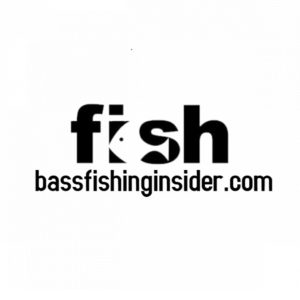
Throwing dark lures at night isn’t enough. Want more bites after sundown? Here’s how sound, contrast, and color choice combine to trigger strikes when visibility disappears.
Bass fishing at night presents a unique opportunity to fish without the typical pressures of daytime fishing and escape the heat of the day during certain times of the year. Many great lure and bait choices work well at night, but many anglers get stuck when trying to understand color and options for nighttime fishing.
The best color for bass fishing at night is black for low light and slow-moving baits, junebug for high light and slow-moving baits, black with orange accents for low light and fast-moving baits, and black/blue for high light levels with a fast-moving bait.
Many studies have shown that more lunkers are caught at night than at regular times of the day. So choosing the right color is an essential factor in your nighttime fishing success. Read on below for a Bass Fishing Insider tip that most bass anglers miss. It could change your night fishing and help put more fish in the boat.
Want to go deeper? Check out these 49 bass fishing tips that consistently put fish in the boat—most anglers overlook at least a few.
What Factors Affect Color Choice for Bass Fishing at Night
Bass can see at night, so choosing the right color for your lure or bait is important. For a great read and discussion about nighttime bass fishing, check out Bass Fishing Insider’s comprehensive article, Can Bass See at Night?
Choosing colors for your lures and baits at night warrants careful consideration. Nighttime color selection is similar to daytime selection in one very important aspect.
Color Selection is related to light penetration. When there is not much light penetration, you’ll need to opt for darker colors so that your lure can take advantage of contrast to the surrounding environment. Low light penetration means that bass can’t really distinguish color, so it becomes less of a factor. Night-time bass fishing with soft moonlight or ambient light is akin to fishing in muddy water. You’ll need to create contrast for fish to see what you’re offering.
However, color may become a bit more important when the moon is big and bright or when there are other sources of ambient light like dock lights, marinas, or other light sources. Color matters more as light penetration increases — just like daytime fishing.
Color will likely matter less, and contrast will matter more at night because it’s naturally darker out at night.
How Does Lure Type Relate to Color Choice at Night for Bass?
The type of lure or bait that you use at night impacts the importance of color choice. Color choice can be highly relevant to some bait and lure choices, while color is not as much of a factor as others.
Here’s the formula for picking colors.
Light Penetration + Lure or Bait Choice = Color Options
When fishing with slow-moving baits like soft plastic worms, craws, or other non-reaction type baits, color is a bit more relevant than reaction style baits (usually faster moving) because fish have more of a chance to see the bait and decide whether it seems natural or not.
In high light penetration scenarios (bright moon, etc.), opting for more natural colors makes sense but continue to lean towards darker colors to maintain the effects and benefits of contrast. Junebug or green pumpkin fit the bill, whereas more translucent colors like motor oil may not work as well as they would in daytime light situations. Bright colors on soft plastics don’t matter as much because they offer little to no contrast.
In low-light settings, contrast becomes more of a factor when fishing with slower baits. Choose colors like black or black and blue for best results. By choosing darker colors, you’ll be able to take advantage of a silhouette effect, making it easier for bass to find your bait.
Light penetration is a little less relevant for “louder” reaction-style baits like buzzbaits and topwater. Fish use vision, but the added elements of sound and vibration allow fish to incorporate additional senses for these kinds of presentations.
In high light penetration situations for reaction style baits, you may want to opt for a color to take advantage of the potential for vision to have an effect by opting for brighter colors. Brighter colors don’t have as much opportunity to adversely affect your reaction style bait because fish don’t have time to examine faster-moving baits as they do with slower-moving lures, worms, and other baits. You may benefit from a little orange or chartreuse flash on a “loud” bait to add an extra layer of attention-getting action.
Contrast is still an important factor for low light penetration nights for reaction-style baits. When visibility is already decreased due to the nighttime effect, and you also have little to no moonlight or other ambient light, you’ll want to take advantage of every chance to attract the attention of bass. Contrast is, once again, significant in this setting. Choose black or other dark colors for the best chance of creating a silhouette
for bass to see.
| Low light penetration (minimal light from the moon or overcast, cloudy conditions) | slower-moving baits | Use black or dark blue or a mix. |
| High light penetration (bigger moon phases or lots of ambient light) | slower-moving baits | Use more natural, darker colors like junebug. |
| Low light penetration (minimal light from the moon or overcast, cloudy conditions) | faster/reaction baits | Use black or dark blue or a mix. |
| High light penetration (bigger moon phases or lots of ambient light) | faster/reaction baits | Use black with a highlight like bright orange or chartreuse. |
Bass Insider Tip
Do this to catch more bass!
Contrast WITHIN the lure or bait is what’s critical. Bass lose some ability to distinguish colors at different depths and with lower light levels. However, contrast can still be a factor. Although they may be unable to tell the difference between two colors, the two-color scheme may still be very important.
Using soft plastics or lures with two different colors (even if they’re both dark) can mean big things underwater. Bass may see the two colors as different degrees of contrast, which could spark their interest and elicit a strike.
Night Fishing for Bass: Lure Recommendations
The Strike King Tour Grade Night Spinnerbait is an excellent choice. Its oversized Colorado blade produces a strong thump, making it easier for bass to locate the lure in low-light conditions. You can find this spinnerbait on Amazon here:🔗 Strike King Tour Grade Night Spinnerbait. This spinnerbait is designed specifically for night fishing, featuring a black and blue color scheme and a single Colorado blade to maximize vibration and visibility in dark waters.
For night fishing, the Jitterbug Topwater Lure in black is one of my go to baits—its rhythmic surface action and added clicker noise make it ideal for low-light conditions. You can find it here: Jitterbug Topwater Lure. This lure’s distinctive “plop-plop-plop” sound, combined with the added clicker, effectively attracts bass during nighttime fishing sessions.
For a bold night fishing option, the Googan Baits 10″ Mondo Worm in Black Blue Flake is a game-changer—its oversized profile and aggressive tail action entice big bass in low-light conditions. Check it out here: Googan Baits 10″ Mondo Worm. This worm’s design is perfect for Texas-rigging through shallow vegetation or Carolina-rigging on offshore structures, making it versatile for various fishing scenarios.
🔊 Sound Matters: Why Noisy Lures Catch More Bass at Night
When visibility drops, bass rely more on vibration and sound than sight. That’s where noisy lures shine.
- Rattles and beads: Choose crankbaits or topwaters with internal rattles or clacking chambers. The sound helps bass locate your bait in total darkness.
- Buzzbaits and chatterbaits: These create strong vibration and noise trails that cut through the water and get attention fast.
- Soft plastics with glass beads: Add a small rattle insert into a worm or creature bait. It gives subtle noise that triggers bites without being overkill.
🎧 Extra tip: On still nights, subtle ticking sounds (like glass beads) often outperform loud rattles. Match the noise level to the conditions.
The Bass Line. Final Word
Night fishing brings different issues that must be carefully considered before choosing bait and lure colors. Take a little time to assess the light penetration of the night you’re fishing in, combined with your lure or bait choices, to give yourself the best chance of catching the most fish.
Affiliate Disclosure:
Some of the links in this post may be affiliate links. If you make a purchase through them, we may earn a small commission at no extra cost to you.




